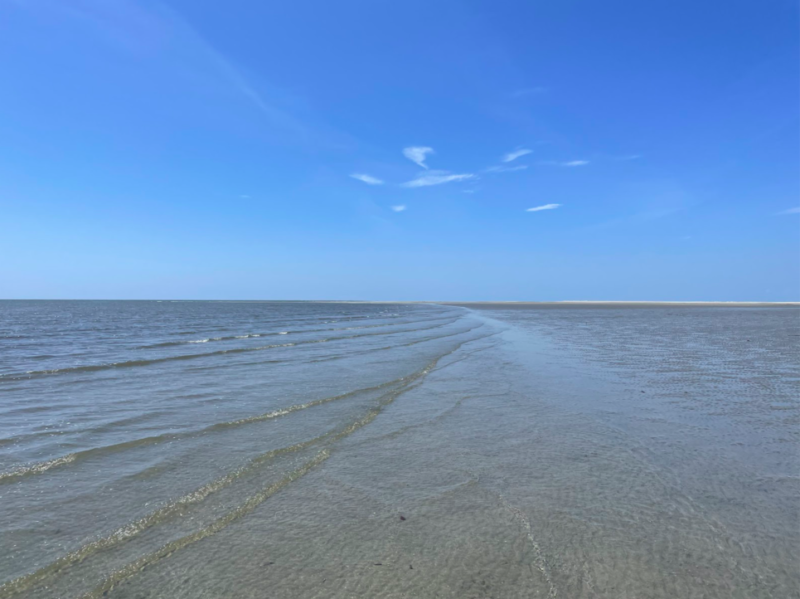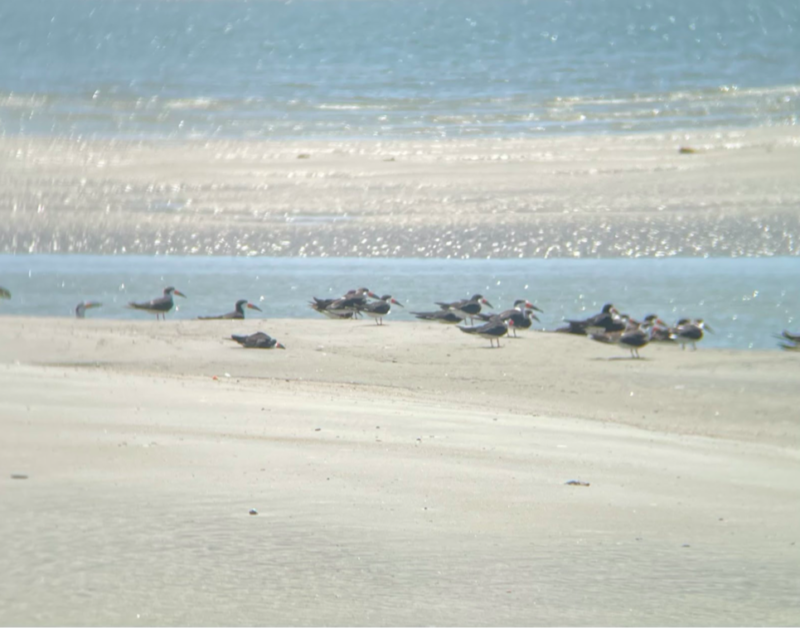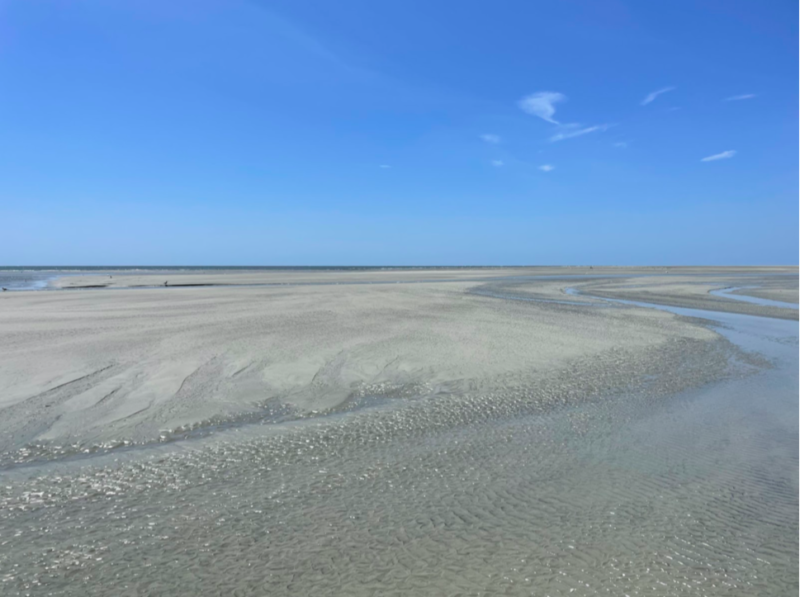
The barrier islands of the South Carolina lowcountry are a charming and important geological landform. Situated directly in contact with the Atlantic ocean, barrier islands protect more proximal sea islands and the mainland from high energy storm cells. Unlike sea islands, barrier islands are in a perpetual state of change. In fact, they can change by the day, and on St. Phillip’s island, the beach drop off point is where this daily and weekly shift can be seen most immediately. My previous trip out to the island stunned me by how different the beachfront looked compared to the last time I saw it, about 2 weeks before. Every time I visit, more and more debris accumulates on the high tide line bordering the beach trail. But, despite this frequent physical metamorphosis, the island takes on a fairly lonely role as being one of the last pristine safe havens for migrating and nesting seabirds and shorebirds along the coast of South Carolina.
I walked south towards the southern tip of the beachfront. On this particular day, the tide was extremely low, exposing vast areas of sand flats that aren’t normally visible. It was a bright, sunny morning with not a cloud in the sky, the smell of salt was heavy on the air, and I had one goal: to get a good view of the seabirds taking advantage of the exposed sand flats to rest and forage.

The exposed sand flat behind the large congregation of seabirds.
To my pleasant surprise, I was able to make out every single species of tern off the lowcountry coast at that time, in addition to many other species and a large group of my favorite seabird: the black skimmer. This bird is beautifully unique, and exhibits a really interesting foraging technique where they fly extremely close to the water’s surface with their lower mandible skimming for fish. Upon contact with a prey item, the bird quickly shuts their large, black and orange bills. The bill is actually a great way to identify them, as they seem to have a large underbite.

A small portion of the black skimmers seen. One can be seen laying completely down, which is done to cool off in the heat.
Seeing this sparked in me a sense that I was witnessing a rare congregation, a feeling that I was lucky to see such an aggregation of seabirds. And in part, I was. Habitats such as the exposed sand flat with little vegetation around and not a single man-made structure in view are quickly disappearing. The majority of barrier islands here are now developed, and are continuing to have more homes and municipalities spawn. With that comes a double edged sword that is detrimental for birds like the black skimmer: habitat loss and human disturbance. Each edge has worked to cut the black skimmer population down about 87% in 49 years of surveying. The skimmer is particularly sensitive to disturbance, especially during nesting season (May through July). If disturbed during this time, nesting mates quickly abandon eggs and do not return to continue incubating. This is why the majority of the recorded skimmer nests occur on protected islands where disturbance is prohibited, such as Cape Romain National Wildlife Refuge.

The low tide line where numerous whelks, clams, starfish, hermit crabs, and horseshoe crabs were found.
No matter the beach you visit this summer, you can do your part in ensuring birds like the black skimmer can nest successfully. Keeping dogs on their leashes, giving large groups of birds a wide berth, and avoiding the dune areas are all ways you can help protect such magnificent birds. Come visit St. Phillip’s with us to witness one of the last remaining southern safe havens.
Post by Eric Ng (Naturalist Guide)
